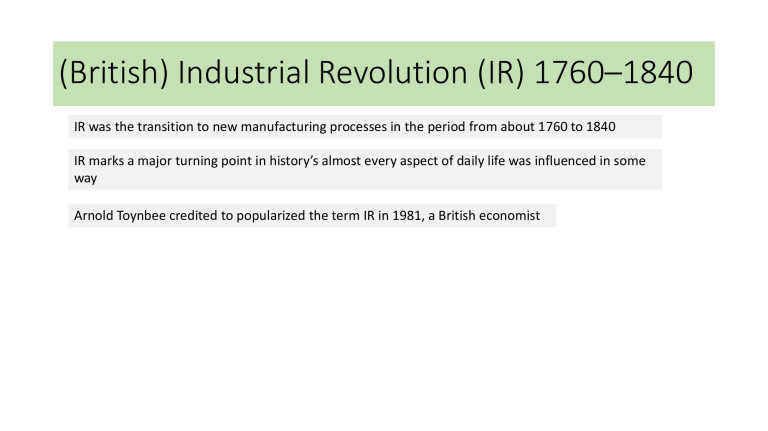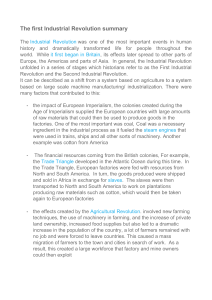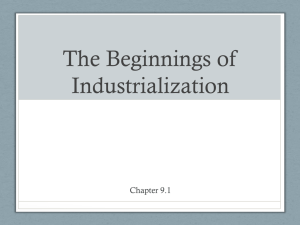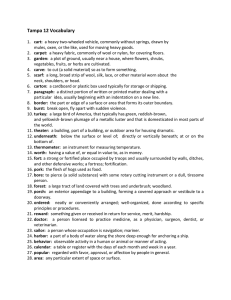
(British) Industrial Revolution (IR) 1760–1840 IR was the transition to new manufacturing processes in the period from about 1760 to 1840 IR marks a major turning point in history’s almost every aspect of daily life was influenced in some way Arnold Toynbee credited to popularized the term IR in 1981, a British economist British woolen empire: Source of manpower for IR Raw wool 1700 AD: 75% of British lived in village Washing the wool Free winter, Free time City merchants come to farm Dye the wool Buying wool from the sheep farm Distribute to the villagers Collecting the final product Carding the wool Spinning the wool Selling to cities/Export (Low price but high quality Huge trade by British, Big profit my merchants Bound into bobbins Positive factors of British IR Weaving the threads Final cloth Everybody seems happy British agricultural revolution Helpless people, Large scale urban migration Manpower for IR Wood as a fuel Huge colony resources Modern education Urban migration British constitutional monarchy Bank of England 1694 Mercantilism Doubled the British population Captive colony markets From wool to cotton: the rise of Industrial Empire 1760: Cotton as the first product of experienced IR Wool export = 30 times of cotton export Change of upper-class fashion taste Growing demand of cotton cloth rather than wool Automation of yarn production Flying Shuttle Jhon Kay 1733 Derived by coal, transportable Driving machine of spinning and wheeling Slave transport from Africa to US Spinning Jenny James Hargreaves 1764 Water Frame Richard Arkwright 1769 Cotton from US, Dye from India Cotton and wool follow the same process of production Most important invention Steam Railroad, George Stephenson 1814 Final production in Britain Need more cotton production Crompton’s Mule Samuel Crompton 1779 Steam Engine, James Watt 1781 Steamboat, Robert Fulton 1807 Cotton Transport Revolution Colony market in Africa, US, India Result: More than 50% of export production is cotton product within 60 years. Flying shuttle Spinning jenny Water frame Crompton’s mule Flying shuttle Flying shuttle Spinning machine Spinney Jenny Spinney jenny Water frame Spinning mule Power loom Self acting mule Self acting mule Agricultural revolution Population Revolution Mining revolution (coal) Canal development Transport revolution Steam engine Steam engine Rail road Town development Disease Crowd and chaos Pollution Pollution Luxury Social Impact of IR 1. Villagers lose vitality 2. Rural–urban migration 14. Different role of men and women 15. Classical English literature – Jean Austin, Charles Dickens 3. Factory system 4. Factory worker (worker class/proletariat) 5. Overtime work/ long time in workplace 6. Huge investment in production 7. Low wage system Worker’s revolution – Marxist philosophy 8. Women and children at work 9. Huge profit (bourgeois and upper middle class) 10. Emergence of lower-lower class – growing economic disparity 11. Luxurious life 12. More years of education – technical and professional 13. Anti capitalism movement (later part) – Karl Marx – Das Kapital – hope for communism



